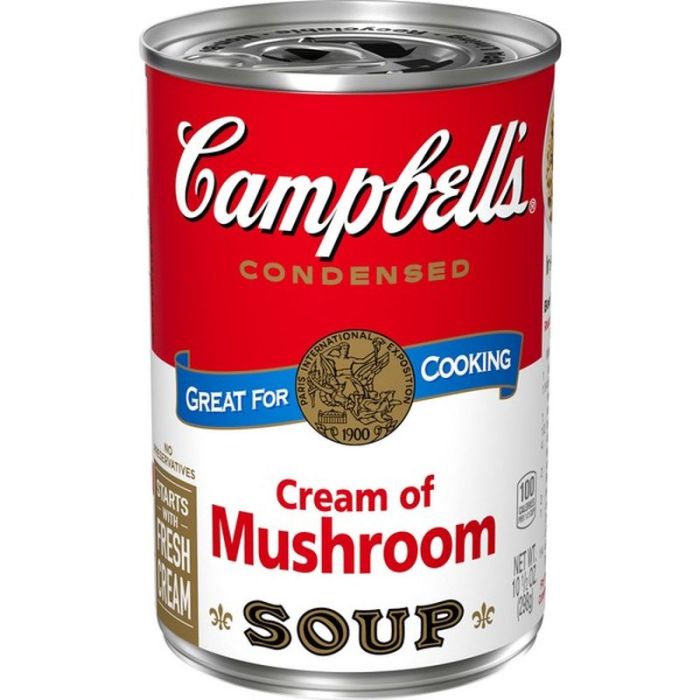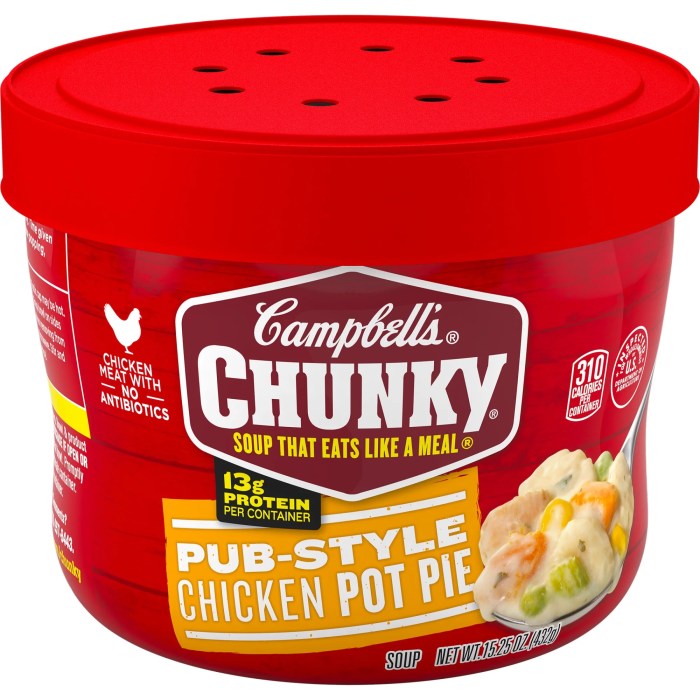Souped Up Wok Recipes: Elevating Classic Stir-Fries: Souped Up Recipes Wok
Souped up recipes wok – Wok cooking, a cornerstone of Asian cuisine, offers a dynamic canvas for culinary creativity. “Souped up” wok recipes represent a deliberate enhancement of traditional stir-fries, moving beyond basic flavor profiles to create complex and intensely flavorful dishes. This exploration delves into the art of elevating wok cooking, examining diverse flavor combinations, cooking techniques, and visual presentation.
Understanding “Souped Up” Wok Recipes, Souped up recipes wok
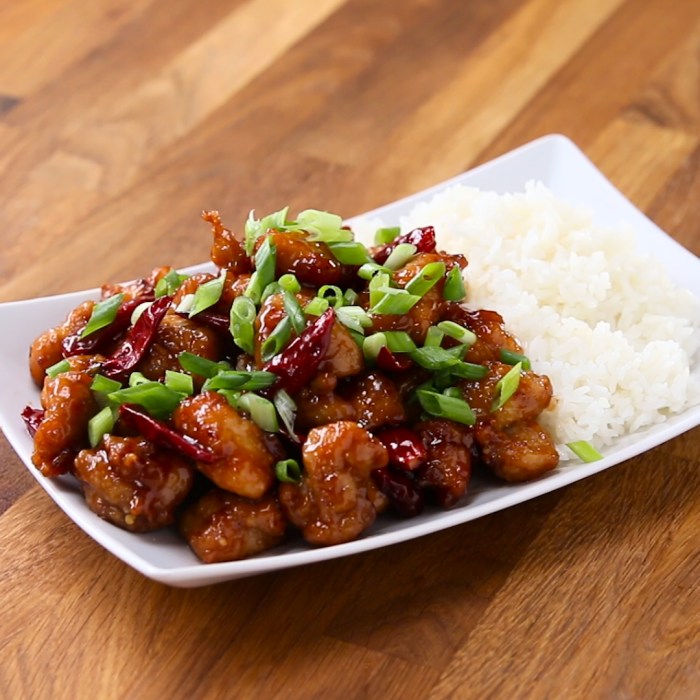
Source: buzzfeed.com
“Souped up,” in the context of wok cooking, signifies a move beyond simple stir-fries. It involves layering flavors, using more sophisticated sauces, and incorporating a wider range of ingredients to create a richer, more complex taste experience. Common wok dishes like Kung Pao chicken or sweet and sour pork can easily be “souped up” with the addition of premium ingredients or unique flavor combinations.
Three distinct interpretations of a “souped up” wok recipe include: (1) elevated ingredient quality – using premium proteins, exotic vegetables, and artisanal sauces; (2) complex flavor layering – combining multiple contrasting flavors, such as sweet, sour, spicy, and savory; (3) innovative technique – employing advanced wok techniques to achieve superior texture and wok hei.
Recipe Variations: Flavor Profiles
Three “souped up” wok recipes showcasing distinct flavor profiles are presented below. These recipes highlight the power of sauce in achieving specific flavor profiles and demonstrate advanced wok techniques.
- Spicy Sichuan Wok: Ingredients: 1 lb diced chicken, 1 red bell pepper (sliced), 1 green bell pepper (sliced), 1/2 cup Sichuan peppercorns, 2 tbsp chili garlic sauce, 1 tbsp soy sauce, 1 tbsp rice vinegar, 1 tbsp sesame oil, 2 cloves garlic (minced), 1 inch ginger (minced), 2 scallions (chopped). Technique: High heat stir-frying, careful control of spice level through gradual addition of chili garlic sauce and Sichuan peppercorns.
Sauce focuses on bold spiciness and numbing sensation.
- Sweet and Sour Pineapple Wok: Ingredients: 1 lb pork tenderloin (sliced), 1 pineapple (cubed), 1 red onion (sliced), 1/2 cup sweet and sour sauce (store-bought or homemade), 1/4 cup rice vinegar, 2 tbsp soy sauce, 1 tbsp cornstarch, 1 tbsp brown sugar, 1 tbsp sesame oil. Technique: Balancing sweet and sour elements through precise sauce ratios, quick stir-frying to retain pineapple’s texture. Sauce is a delicate balance of sweet and tartness.
- Savory Ginger Garlic Wok: Ingredients: 1 lb shrimp (peeled and deveined), 1 broccoli head (florets), 1/2 cup snow peas, 1/4 cup oyster sauce, 2 tbsp soy sauce, 1 tbsp rice wine, 2 tbsp ginger (minced), 4 cloves garlic (minced), 1 tbsp sesame oil. Technique: Stir-frying shrimp until just cooked, incorporating vegetables towards the end to maintain crispness. Sauce is focused on umami and savory notes from ginger, garlic, and oyster sauce.
The sauces in these recipes play a pivotal role. The Sichuan recipe relies on a potent blend of chili and Sichuan peppercorns for heat and numbing sensation. The sweet and sour recipe balances sweet and tart notes, while the ginger garlic recipe leverages umami-rich ingredients for a savory depth.
Recipe Variations: Ingredient Combinations
This table demonstrates diverse ingredient combinations for “souped up” wok recipes, highlighting complementary flavor pairings and their impact on taste and texture.
| Protein | Vegetables | Sauce | Flavor Profile |
|---|---|---|---|
| Chicken | Broccoli, carrots, bell peppers | Peanut sauce | Savory, nutty |
| Beef | Snow peas, mushrooms, onions | Oyster sauce | Umami-rich, savory |
| Tofu | Bok choy, shiitake mushrooms, bamboo shoots | Soy sauce, ginger, garlic | Savory, slightly sweet |
| Shrimp | Asparagus, zucchini, bell peppers | Lemon-butter sauce | Bright, citrusy |
Cooking Techniques and Methods
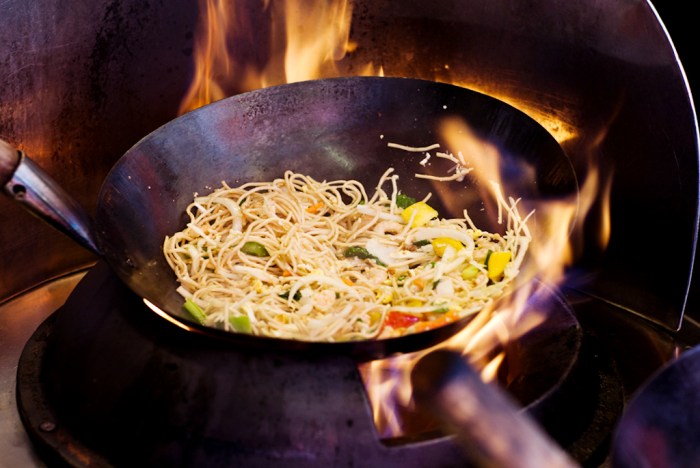
Source: eatgoldenwok.com
The following steps detail the preparation of a “souped up” shrimp and vegetable wok recipe. Achieving wok hei is crucial for optimal flavor, requiring high heat and quick cooking.
- Prepare ingredients: chop vegetables, peel and devein shrimp.
- Heat wok: heat wok over high heat until very hot.
- Add oil: add oil and swirl to coat the wok.
- Stir-fry shrimp: add shrimp and stir-fry until pink and cooked through.
- Add vegetables: add vegetables and stir-fry until tender-crisp.
- Add sauce: add sauce (e.g., a combination of soy sauce, oyster sauce, and rice wine) and toss to coat.
- Serve immediately: serve immediately over rice or noodles.
Three common mistakes to avoid include: overcrowding the wok (reducing heat and preventing proper browning), not using high enough heat (resulting in soggy vegetables), and not cooking quickly enough (compromising the texture and flavor).
Visual Representation of a “Souped Up” Wok Dish
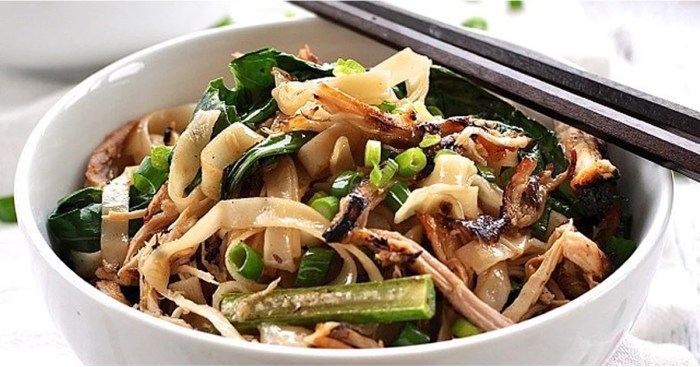
Source: popsugar-assets.com
A “souped up” chicken and cashew wok dish presents a visually appealing array of colors, textures, and shapes. The glossy sheen of the sauce contrasts with the bright colors of the vegetables (e.g., vibrant red bell peppers, crisp green broccoli, and golden cashews). The chicken pieces offer a textural contrast to the vegetables, and the cashews provide visual interest with their irregular shapes and light brown hue.
The ideal plating arrangement involves a mound of the wok dish, strategically placed on the plate to showcase the colorful ingredients.
This vibrant presentation enhances the dining experience by stimulating the appetite and creating a sense of excitement before the first bite. The careful arrangement of ingredients emphasizes the dish’s complexity and artistry.
Dietary Adaptations
Adapting “souped up” wok recipes for vegetarian or vegan diets involves thoughtful ingredient substitutions. For example, tofu or tempeh can replace chicken or shrimp, while mushrooms, eggplant, and other hearty vegetables can provide substance and flavor. Maintaining texture and flavor requires using appropriate sauces and seasonings. For instance, a flavorful peanut sauce or a savory ginger-garlic sauce can compensate for the absence of meat.
Creating a balanced and nutritious “souped up” wok dish involves selecting a variety of vegetables for optimal nutrient intake. Including whole grains like brown rice or quinoa can enhance the dish’s nutritional value. Careful attention to portion sizes ensures a healthy and satisfying meal.
FAQ Explained
Can I use any wok?
Yeah, mate, but a proper carbon steel wok is best for that authentic wok hei.
While souped-up recipes in a wok offer quick, high-heat cooking, sometimes a gentler approach is desired. For those seeking a comforting, flavorful alternative, consider exploring the convenience of a slow cooker; you might find inspiration in this collection of slow cooker recipe soup options. Returning to the wok, however, remember its versatility allows for a wide range of delicious, stir-fried soups as well.
What’s the secret to good wok hei?
High heat, a ripping hot wok, and quick cooking are key. Keep everything moving!
Can I make these recipes vegetarian/vegan?
Totally! Swap out the meat for tofu, tempeh, or loads of veggies. Get creative with your protein sources.
How do I clean my wok?
Give it a good scrub with hot water and a bit of soap after each use. Seasoning it properly helps too.

